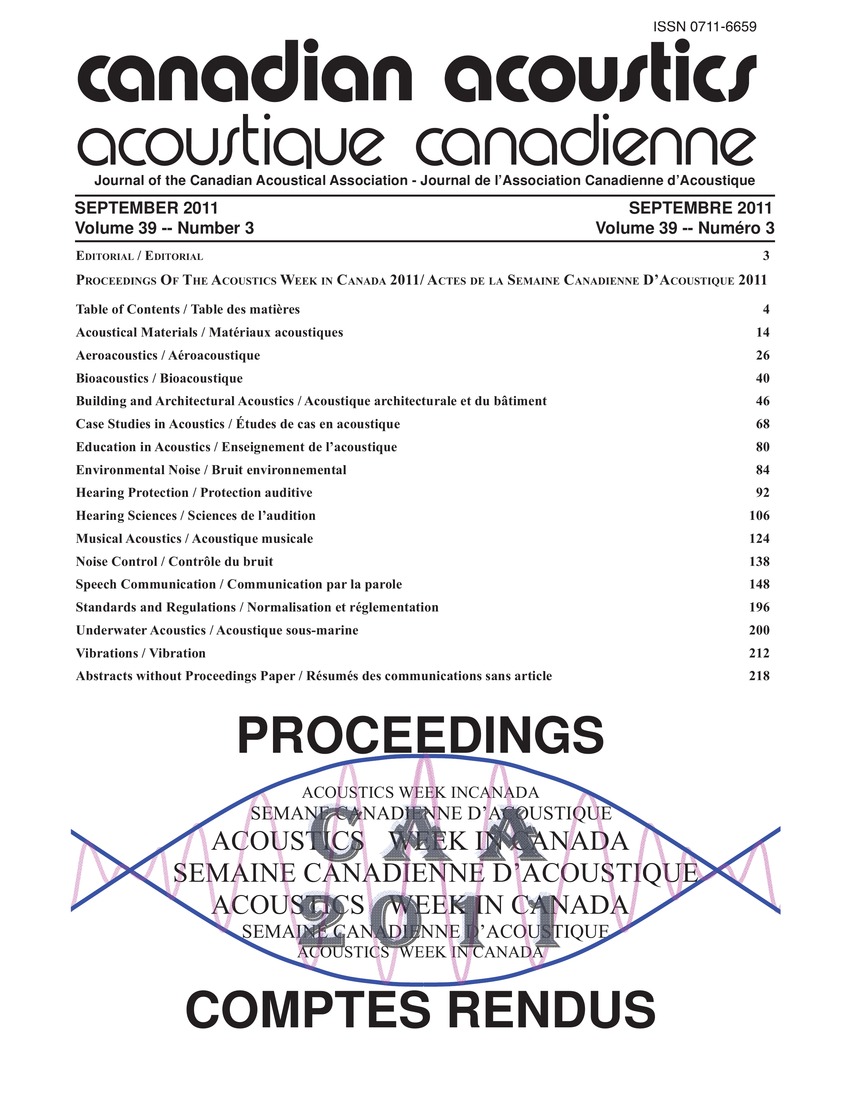Moving to the beat improves timekeeping in a rhythm perception task
Keywords:
Program design, Rhythm perceptionAbstract
A study that examines the effect of tapping on participants' sensitivity to changes in the temporal location of a probe tone is presented. The experiment was conducted using a customized program design by the MAPLE lab at McMaster University. Tones were presented to participants stimuli headphones and participants tapped on an electronic drum pad. During the experiment, participants were presented with a total of 64 trials. Half of the blocks employed a 101 of 400ms and the other half employed an 101 of 600ms. All participants gave informed consent and were remunerated with course credit for their participation. The effect of movement on rhythm perception is consistent with previous work showing that movement can affect the perception of metrically ambiguous stimuli.Additional Files
Published
How to Cite
Issue
Section
License
Author Licensing Addendum
This Licensing Addendum ("Addendum") is entered into between the undersigned Author(s) and Canadian Acoustics journal published by the Canadian Acoustical Association (hereinafter referred to as the "Publisher"). The Author(s) and the Publisher agree as follows:
-
Retained Rights: The Author(s) retain(s) the following rights:
- The right to reproduce, distribute, and publicly display the Work on the Author's personal website or the website of the Author's institution.
- The right to use the Work in the Author's teaching activities and presentations.
- The right to include the Work in a compilation for the Author's personal use, not for sale.
-
Grant of License: The Author(s) grant(s) to the Publisher a worldwide exclusive license to publish, reproduce, distribute, and display the Work in Canadian Acoustics and any other formats and media deemed appropriate by the Publisher.
-
Attribution: The Publisher agrees to include proper attribution to the Author(s) in all publications and reproductions of the Work.
-
No Conflict: This Addendum is intended to be in harmony with, and not in conflict with, the terms and conditions of the original agreement entered into between the Author(s) and the Publisher.
-
Copyright Clause: Copyright on articles is held by the Author(s). The corresponding Author has the right to grant on behalf of all Authors and does grant on behalf of all Authors, a worldwide exclusive license to the Publisher and its licensees in perpetuity, in all forms, formats, and media (whether known now or created in the future), including but not limited to the rights to publish, reproduce, distribute, display, store, translate, create adaptations, reprints, include within collections, and create summaries, extracts, and/or abstracts of the Contribution.


